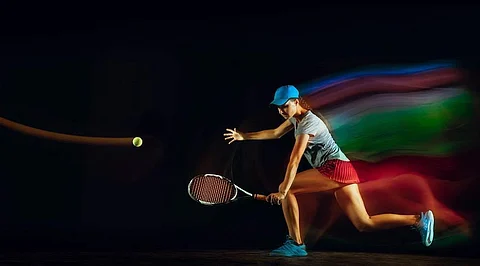

The tennis racket dates back thousands of years. In actuality, the Romans of antiquity utilized it. At that time, the tennis court was its primary function. The tennis racket is distinguished by a handle of varying sizes, a stem, and a central portion known as the heart that connects the stem to the plate, and ultimately by the wider and rounded portion made up of the stringing, known as the plate of the strings. These features are similar to those of the shuttlecock and basketball string.
Ball control, which was once more challenging, has improved due to the gradual evolution of the shape and materials utilized. Originally constructed with wood, it gradually transitioned to steel, then aluminum alloys, and finally to carbon and graphite, the two materials that are currently most commonly utilized. Depending on how each player like to play, they are available in a variety of sizes and shapes. Additionally, you can alter the weight and balance. While a flying player would benefit more from a more balanced racquet in the handle, a cross-country player would need a somewhat more balanced racquet in the head.
Depending on the player's preference, a different grip is favored for the handle when using a one-handed backhand as opposed to a two-handed backhand. An adhesive tape covering the grip ensures a secure hold of the racquet and is periodically changed. The Htkw, a contemporary take on the traditional tennis racket, was made by IA of the All Design Lab team. It is a cutting-edge variation that is more resilient but lighter. Designers chose to merely request tennis racket redesigns from AI text-to-image chatbots. Although the Htkw top and bottom are pretty conventional, the connection in the middle resembles an organic network of branches. It's a novel departure from the typical Y-frame found on racquets, but what makes it stand out is not just its distinctive appearance but also its usability.
The All Design Lab team stated: "We set out on this project with the intention of investigating fresh possibilities. To present a fresh tale inside the sport, we wanted to produce something intriguing. This taught us that while these programs are quite powerful, their power is limited by the quality of the underlying material they must sample. Additionally, the design of tennis racquets hasn't changed significantly throughout time. However, it is still possible to envision a racquet that uses new design methods, particularly sophisticated CAD procedures like generative design tools, that is even lighter and stronger."
Join our WhatsApp Channel to get the latest news, exclusives and videos on WhatsApp
_____________
Disclaimer: Analytics Insight does not provide financial advice or guidance. Also note that the cryptocurrencies mentioned/listed on the website could potentially be scams, i.e. designed to induce you to invest financial resources that may be lost forever and not be recoverable once investments are made. You are responsible for conducting your own research (DYOR) before making any investments. Read more here.
